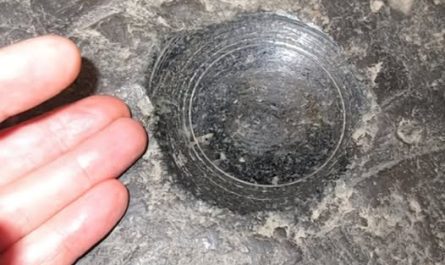Across the pond in Shropshire, western England, a seemingly innocuous mound on the historic Soulton Hall estate is whispering tales from centuries past. What was once a local curiosity is now the focus of exciting archaeological investigations that suggest the presence of a long-lost medieval castle hidden beneath the unassuming rise in the landscape.
The Soulton Hall estate itself boasts a rich history, with its main house dating back to the 17th century. However, its roots delve much deeper into English soil, with records in the venerable Domesday Book of 1086 confirming habitation on the land since at least the 11th century. For generations, those who have walked the fields of Soulton Hall harbored a suspicion that the peculiar mound held more than just earth and time.

Now, those long-held hunches are beginning to solidify into fascinating discoveries. Archaeologists from the UK-based team Dig Ventures, working in tandem with eager students from Cardiff University, have embarked on a mission to peel back the layers of this enigmatic mound. Their dedicated efforts are yielding compelling evidence that a medieval castle or fortified structure may indeed lie buried beneath.
The earth is beginning to give up its secrets, revealing substantial sandstone walls – the very bones of a forgotten stronghold. Furthermore, the team has unearthed waterlogged timber, strong indicators of a defensive moat that would have once surrounded and protected the site. According to Nat Jackson, the lead archaeologist guiding this intriguing dig, the structural remains tentatively point to a period between the 13th and 15th centuries. This era was a time of shifting power dynamics and the construction of numerous smaller castles and fortified outposts across England.
The strategic positioning of Soulton Hall lends credence to the theory that the mound could conceal such a defensive structure. Situated near an old route leading to the nearby village of Wem, a small castle or fortified manor here would have served as an ideal vantage point, allowing for the monitoring of travel and potentially the assertion of local authority.
Beyond the emerging architectural evidence, the artifacts being unearthed are adding rich texture to the historical narrative. Among the most captivating finds is a medieval ampulla – a small, often ornate flask typically used by pilgrims to carry holy water from sacred sites. This single artifact suggests that the area held not only strategic importance but also a spiritual significance for people during the medieval period. Perhaps travelers on their pilgrimages passed by or even sought solace at this location.
The ongoing excavations at Soulton Hall are proving to be more than just the unearthing of old stones and timber. They are providing a rare and tangible connection to the daily lives of people who lived centuries ago. The blend of defensive fortifications and evidence of religious devotion paints a more complete picture of the complexities of medieval existence in this corner of England.
This project serves as a wonderful reminder that history is not confined to dusty textbooks and grand monuments. Sometimes, the most compelling stories lie hidden beneath an unassuming mound in a farmer’s field, waiting for dedicated hands and keen eyes to bring them back to light. The potential medieval castle at Soulton Hall promises to unlock a lesser-known chapter of English history, offering us a fascinating glimpse into a world of knights, pilgrims, and the ever-changing landscape of the medieval era. As the research continues, we can eagerly anticipate further revelations from beneath the soil of this historic English estate.


